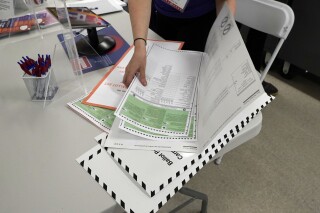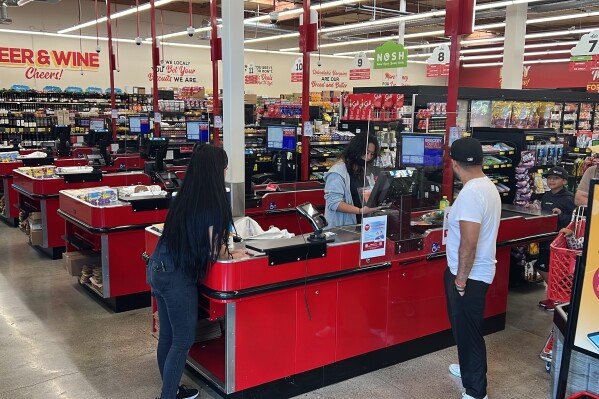There is no connection between rising COVID cases and elections, contrary to claims online

FILE - A poll worker assembles a ballot at Frank McCourt High School in New York’s party primaries, Tuesday, June 22, 2021, in New York. Some online are claiming that COVID-19 only spikes during election seasons, but experts say there is no connection between the two. (AP Photo/Richard Drew)
CLAIM: COVID-19 only spikes during election seasons.
AP’S ASSESSMENT: False. There is no connection between rising COVID-19 cases and the electoral process, epidemiology experts confirm. Since the first U.S. case was confirmed in January 2020, the virus has spiked near the end of the year, but also during summer, nowhere near major elections.
THE FACTS: As the 2024 presidential race enters the fall primary season, some on social media are trying to tie elections to COVID-19 waves, falsely claiming that the virus is a tool to control the outcome.
“Some won’t figure out the Mysterious Connection between The Coronavirus & The Election!!!” reads a caption on one Instagram post. “It’s Called Election Interference by Mail In Ballots & the Machines. Wake-Up America.”
A second caption on the post states: “Imagine a virus so smart it only attacks during election season.”
But elections do not dictate when COVID-19 spikes, which experts say have occurred far from major elections multiple times.
“There’s no biologically plausible or credible reason why spikes would be linked with election seasons,” Dr. Emily Smith, an epidemiologist and assistant professor of emergency medicine and surgery at Duke University, wrote in an email to the AP. “Surges are due to increases in cases, which are related to human behavior. So reduced masking and vaccination rates are associated with case increases. Not election seasons.”
Although there is no formal definition of a spike, it can be characterized as the peak of a consistent increase in cases, said Dr. Janak Patel, director of the department of infection control and healthcare epidemiology at the University of Texas Medical Branch at Galveston.
The U.S. has seen rises in COVID-19 cases that coincide with election seasons in November — but they have also occurred during the summer, according to Patel.
Data from the Centers of Disease Control and Prevention shows that the largest spike occurred the week ending Jan. 8, 2022, when 30.5% of reported COVID-19 tests came back positive. By contrast, cases had been decreasing in the lead-up to the off-year election on Nov. 2, 2021, a few months prior.
Cases did spike close to the 2020 presidential election after they began rising in September of that year, but the 2022 midterms were a different story. After a peak with a 14.2% positivity rate the week ending July 23, cases went down leading up to the election on Nov. 8.
“I haven’t seen any particular timing with elections,” Patel said. “And people campaign for elections throughout the year.”
It is unclear whether the current pattern of COVID-19 waves will continue, or why it has occurred thus far, since the virus hasn’t been around long enough for scientists to know for sure, according to Patel.
Reports of positive tests have become less consistent with the advent of at-home testing, so scientists are now also looking at death and hospitalization rates to track waves of the virus.
While COVID-19 hospital admissions are currently rising — there were 18,871 for the week ending Sept. 2 — they’re a far cry from past peaks, like the 44,000 weekly hospital admissions in early January, the nearly 45,000 in late July 2022, or the 150,000 admissions during the omicron surge of January 2022.
___
This is part of AP’s effort to address widely shared misinformation, including work with outside companies and organizations to add factual context to misleading content that is circulating online. Learn more about fact-checking at AP.

